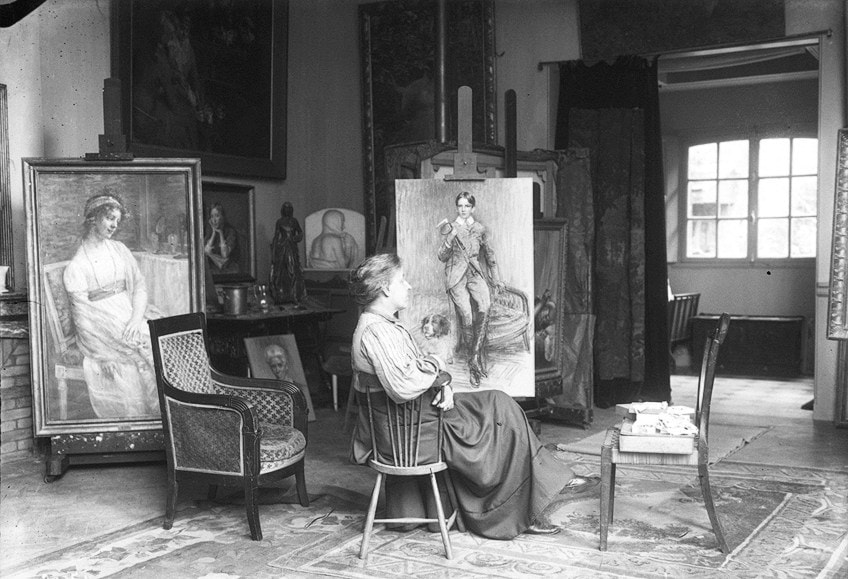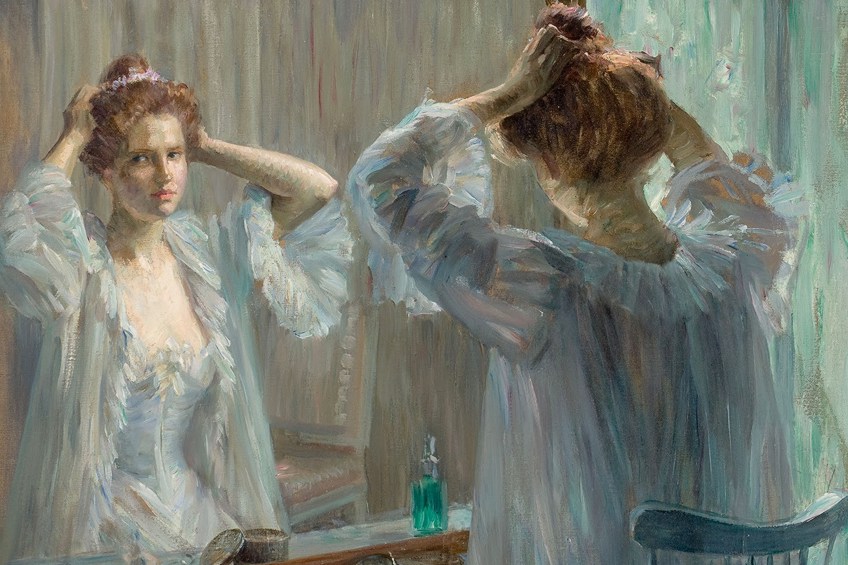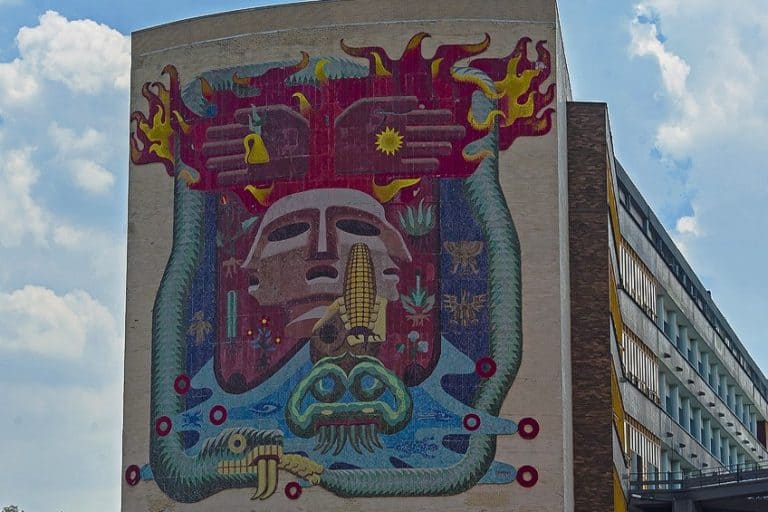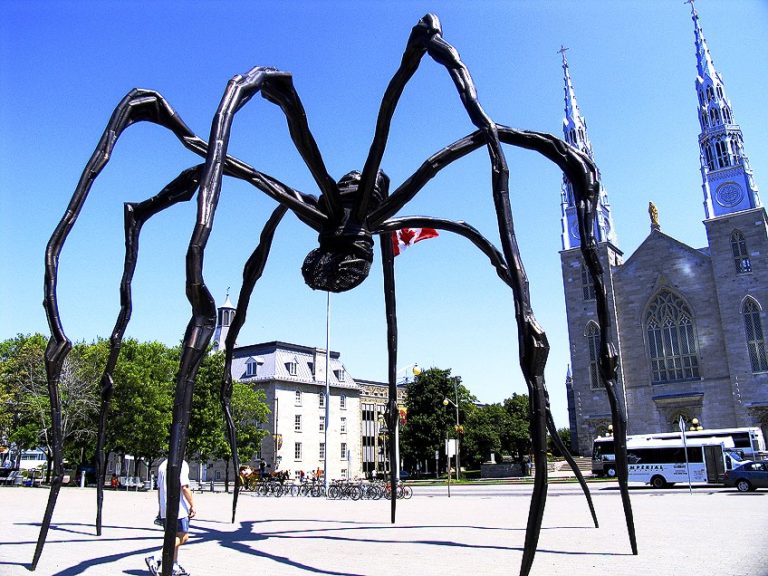Famous Women Impressionists – Notable Female Impressionists
Characterized by bright colors and thick brushstrokes, and using light, shadow, and color to depict fleeting moments in time, Impressionism is one of art history’s most groundbreaking art movements, precipitating modern art. The art world has been largely male-dominated throughout art history, and many women Impressionists were undervalued or not mentioned in the art historical canon. Below, we list 10 now-famous women Impressionists and some of their notable works.
An Introduction to the Female Impressionists
French women were largely unable to receive formal art education during the 19th century. Women experienced a variety of social constraints. Their lives largely revolved around keeping a household and spending time in the company of other women, and they were not allowed to leave their homes unattended if they were not married, which hindered female artists from looking for scenes to paint outside.
However, women Impressionists found a way to use these limitations, creating works that delved into their internal world and reflected their revolutionary feelings that men often were unfamiliar with.
Famous Women Impressionists and Their Important Artworks
Below is a list of 10 influential female Impressionists and some of their works, capturing moments of color and light depicted in their individual styles that contributed to the Impressionist movement in the 19th and early 20th centuries.
Marie Bracquemond (1840 – 1916)
| Artist | Marie Bracquemond |
| When the Artist Lived | 1840 – 1916 |
| Nationality of the Artist | French |
| Where the Artist Lived | France |
| Associated Art Movements | Impressionism |
Marie Bracquemond was a French painter who did not have the financial support for her creative aspirations and was thus mainly self-taught. The art education that she did receive was from the artist, Jean-Auguste-Dominique Ingres.
However, Bracquemond left his studio as he did not have a lot of faith in female painters, assigning them only painting projects of portraits, fruits, flowers, still lifes, and genre paintings.
She painted outdoors in Paris, a practice known as en plein air, and her works earned the attention of Impressionist painters who invited her to show with them. She exhibited three times, but her husband, the artist Félix Bracquemond, put pressure on her and she left her career as an artist.

On the Terrace at Sèvres (Sur la terrasse à Sèvres) (1880) by Marie Bracquemond
| Date Completed | 1880 |
| Dimensions (cm) | 87.9 x 114.3 |
| Medium | Oil on canvas |
| Where It Is Currently Housed | Petit Palais, Paris |
On the Terrace at Sèvres (Sur la terrasse à Sèvres) is a fine example of the Impressionist style, depicting the shifting light using short, expressive brushstrokes, especially in the trees and buildings in the background. Three figures are shown sitting together outside on a beautiful sunny day, gazing in different directions. One of the women is looking directly at the viewer, while the other is turned to the side in contemplation.
The scene appears to be staged, as if the figures are sitting for the artist.
Some of Bracquemond’s other famous works include:
- Self-Portrait (1870)
- Trois femmes aux ombrelles (1880)
- The Artist’s Son and Sister in the Garden at Sevres (1890)

Berthe Morisot (1841 – 1895)
| Artist | Berthe Morisot |
| When the Artist Lived | 1841 – 1895 |
| Nationality of the Artist | French |
| Where the Artist Lived | France |
| Associated Art Movements | Realism, Modern Art |
Berthe Morisot was a French artist who was a member of the Impressionists, invited by her brother-in-law, Manet. She is known for her innovative depictions of intimate moments of modern Parisian women. Using light expressive brushstrokes, she portrayed them with much psychological depth. All her subjects have an ambiguity to them that leaves you wondering what they are thinking.
Morisot exhibited regularly at the Salon in Paris and achieved great recognition as an Impressionist, but male critics referred to her work as “charming” and feminine rather than give her the same recognition as her male contemporaries.

The Cradle (1872) by Berthe Morisot
| Date Completed | 1872 |
| Dimensions (cm) | 56 x 46 |
| Medium | Oil on canvas |
| Where It Is Currently Housed | Musée d’Orsay, Paris |
The Cradle is one of Morisot’s most famous paintings, depicting her sister, Edma watching over her daughter as she sleeps in a cradle. Her left arm is bent, her face resting in her palm as she gazes contemplatively at her daughter whose arm is also bent in the same way.
There is a sense of intimacy portrayed in the painting, accentuated by the mother holding the net over the cradle, forming a translucent barrier between the viewer and the child.
Some of Morisot’s other famous works include:
- Summer’s Day (1879)
- Woman at Her Toilette (1880)
- Eugène Manet and His Daughter in the Garden (1883)

Mary Cassatt (1844 – 1926)
| Artist | Mary Cassatt |
| When the Artist Lived | 1844 – 1926 |
| Nationality of the Artist | American |
| Where the Artist Lived | America, France |
| Associated Art Movements | Modern art, American Impressionism |
Mary Cassatt was an American artist who came from a wealthy family that supported her formal art education. She first studied at the Pennsylvania Academy of the Fine Arts and then traveled to Europe, where she learned under artists such as Édouard Frère and Jean-Léon Gérôme, eventually settling in France where she exhibited her portraits in the Salon. Degas invited her to show with the Impressionists in 1877 and took part in four exhibitions, becoming a successful portrait artist and printmaker.
Although Cassatt declared herself unfit for marriage and motherhood, many of her paintings depict the relationship between women and their children.

The Boating Party (1893 – 1894) by Mary Cassatt
| Date Completed | 1893 – 1894 |
| Dimensions (cm) | 90 x 117.3 |
| Medium | Oil on canvas |
| Where It Is Currently Housed | National Gallery of Art, Washington, D.C. |
The Boating Party by Mary Cassatt depicts two adult figures as well as a baby sitting in a sailboat on the water. The man’s face is partially hidden, placing emphasis on the woman and child. Most of our view is taken up by the boat and figures. The man’s dark back faces the viewer, flattening the picture, and the shoreline is placed at the top of the composition, squishing the horizon and sense of distance.
The style of the picture reflects a Japanese influence with its simple color palette and flat patterned surfaces.
Some of Cassatt’s other famous works include:
- Little Girl in a Blue Armchair (1878)
- Five o’Clock Tea (1880)
- Woman Sitting with a Child in Her Arms (1890)

Lilla Cabot Perry (1848 – 1933)
| Artist | Lilla Cabot Perry |
| When the Artist Lived | 1848 – 1933 |
| Nationality of the Artist | American |
| Where the Artist Lived | America, France, Japan |
| Associated Art Movements | American Impressionism |
Lilla Cabot Perry was an American artist who learned to paint after the birth of her three daughters when she was 36 years old. Her affluent background afforded her the opportunity to study in Paris.
There, she was greatly influenced by the Impressionists, collecting works by Claude Monet and spreading news about the group when she returned home to America.

Lady With a Bowl of Violets (1910) by Lilla Cabot Perry
| Date Completed | 1910 |
| Dimensions (cm) | 102.23 x 76.2 |
| Medium | Oil on canvas |
| Where It Is Currently Housed | National Museum of Women in the Arts, Washington, D.C. |
Lady with a Bowl of Violets demonstrates Perry’s love for light and bold brushwork. She painted it after her family’s return from Tokyo, and a Japanese woodblock print can be seen behind the subject’s head. Perry was also inspired by Japanese art and incorporated elements of the style in her later work.
By using broad brushstrokes of paint, Perry conveys the texture of the woman’s skin and white lace trim on her gown, which reflects warm orange light from the hearth on the left of the composition.
Some of Perry’s other famous works include:
- Open Air Concert (1890)
- Little Girl on a Lane, Giverny (1907)
- A Peach Tree (1925)

Eva Gonzalès (1849 – 1883)
| Artist | Eva Gonzalès |
| When the Artist Lived | 1849 – 1883 |
| Nationality of the Artist | French |
| Where the Artist Lived | France |
| Associated Art Movements | Impressionism |
Eva Gonzalès was a French artist who painted in the Impressionist style but never exhibited with the group. Like many French women, Gonzalès was banned from the École des Beaux-Arts, however, she was able to have private art lessons due to her privileged upbringing, becoming the only official student of Édouard Manet.
Gonzalès painted still lifes, portraits, landscapes, and domestic scenes, and became very skillful in the use of pastels.
She eventually reached her goal of exhibiting with the Salon in Paris and passed away in 1883. The Salon de la Vie Moderne then held a retrospective of 90 of Eva Gonzalès’ artworks in 1885.

A Loge at the Théâtre des Italiens (1874) by Eva Gonzalès
| Date Completed | 1874 |
| Dimensions (cm) | 98 x 130 |
| Medium | Oil on canvas |
| Where It Is Currently Housed | Musée d’Orsay |
A Loge at the Théâtre des Italiens was initially rejected by the Salon. Gonzalès reworked the painting and resubmitted it, and it was accepted in 1879. The work was considered quite a provocative painting for the time. It depicts her sister, Jeanne Gonzalès, and her sister’s later husband, the artist Henri Guérard in an auditorium box. Jeanne is leaning forward and looks to the right, engrossed in the performance, while Guérard’s body faces her, but his gaze seems to pass over her head.
It may have been this disinterested and yet unphased attitude of the figures toward each other that caused a stir at the time it was painted.
Some of Gonzalès’s other famous works include:
- Nanny and Child (1877-1878)
- Awakening Woman (1877-1778)
- Reading in the Forest (1880)

Cecilia Beaux (1855 – 1942)
| Artist | Cecilia Beaux |
| When the Artist Lived | 1855 – 1942 |
| Nationality of the Artist | American |
| Where the Artist Lived | America |
| Associated Art Movements | Impressionism |
Cecilia Beaux was an American portrait painter; her work was characterized by an academic style combined with an experimental quality that made her in demand by figures such as Georges Clemenceau and Theodore Roosevelt. Her portraits had a seriousness about them, while still capturing the subject’s personality.
She traveled to Paris to study at the Académie Julian at the peak of the Impressionist movement. There, she learned to use looser brushstrokes and paint en plein air.

Twilight Confidences (1888) by Cecilia Beaux
| Date Completed | 1888 |
| Dimensions (cm) | 59.7 x 71.1 |
| Medium | Oil on canvas |
| Where It Is Currently Housed | Georgia Museum of Art, Athens, Georgia |
Twilight Confidences depicts two women from the seaside village of Concarneau in Brittany wearing wing-like caps and white collars that were commonly worn by women there. Beaux captures these crisp headdresses while rendering the soft glowing light from the sun on their skin.
The background seascape is not as detailed as the figures, lending it a kind of softness.
Some of Beaux’s other famous works include:
- Les Derniers jours d’enfance (1883-1885)
- Dorothea in the Woods (1897)
- Self-Portrait (1894)

Louise Catherine Breslau (1856 – 1927)
| Artist | Louise Catherine Breslau |
| When the Artist Lived | 1856 – 1927 |
| Nationality of the Artist | German-Swiss |
| Where the Artist Lived | Switzerland, Germany, France |
| Associated Art Movements | Impressionism |
Louise Catherine Breslau was a German-born artist who spent her childhood in Switzerland. She took up drawing as a child to stave off boredom while recovering from asthma and it soon became her passion, continuing her artistic studies in Paris when she was old enough. She succeeded in showing a self-portrait at the Salon and thereafter regularly had her work exhibited there.
Breslau often painted en plein air and her style was sketch-like, using deft brushstrokes. Her portrait commissions were very popular and she opened her own studio.

La Toilette (1898) by Louise Catherine Breslau
| Date Completed | 1898 |
| Dimensions (cm) | 62.9 x 65.4 |
| Medium | Oil on canvas |
| Where It Is Currently Housed | Private Estate |
La Toilette shows Breslau’s talent for depicting feelings expressed in a person’s face and displays her striated painting style. The subject’s back faces the viewer, while she gazes at someone on her left through the mirror’s reflection. Her gown is made up of pastel-colored brushstrokes, lending softness to the fabric, with the tablecloth rendered in the same way.
Her skin glows with light, the source of which seems to be her own reflection.
Some of Breslau’s other famous works include:
- The Study of Drawing: Portrait of Yves Österlind, Age Nine (1901)
- Young Girl Reading by a Window (1912)
- The Artist and her Model (1921)

Anna Ancher (1859 – 1935)
| Artist | Anna Ancher |
| When the Artist Lived | 1859 – 1935 |
| Nationality of the Artist | Danish |
| Where the Artist Lived | Denmark |
| Associated Art Movements | Realism, Modern Art |
Anna Ancher was a Danish painter and one of Denmark’s most talented artists. She was associated with a community in northern Denmark, the Skagen Painters who were like the French Impressionists. Ancher enjoyed painting various scenes of the Skagen community, such as women and children, interior scenes, and everyday activities en plein air.
She painted with a particular focus on exploring light and color.

Sørg (Grief) (1902) by Anna Ancher
| Date Completed | 1902 |
| Dimensions (cm) | 86.3 x 73.8 |
| Medium | Oil on canvas |
| Where It Is Currently Housed | Skagens Museum |
Sørg is a painting that was highly praised. It shows a rare picture of a nude woman kneeling in front of a funerary cross, with an older woman dressed in black kneeling opposite her. This may be symbolic of her life as a religious woman living the bohemian lifestyle of the Skagen people.
The two figures are also believed to represent the meeting of a mother and daughter, of which one had died.
Some of Ancher’s other famous works include:
- A Funeral (1891)
- Solskin i den blå stue (Sunlight in the Blue Room) (1891)
- Harvesters (1905)

Laura Muntz Lyall (1860 – 1930)
| Artist | Laura Muntz Lyall |
| When the Artist Lived | 1860 – 1930 |
| Nationality of the Artist | Canadian |
| Where the Artist Lived | England, Canada |
| Associated Art Movements | American Impressionism |
Laura Muntz Lyall was an English-born artist whose family immigrated to Canada when she was still young. She was initially a teacher and pursued her passion for art, studying at the Académie Colarossi in Paris and becoming an accomplished artist across the world, exhibiting in Ontario, Chicago, and Paris.
Through her use of subtle light and a rich color palette, Lyall developed her own distinct interpretation of Impressionism.

Young Girl in a Garden (1900) by Laura Muntz Lyall
| Date Completed | 1900 |
| Dimensions (cm) | 45 x 55 |
| Medium | Oil on canvas |
| Where It Is Currently Housed | Private Collection |
Laura Muntz Lyall favored painting women and children and is known for imbuing them with a reddish light. This rich tonality can be seen in her painting, Young Girl in a Garden, which depicts a child in the shade against a wall of plants that look like Nasturtiums.
The green leaves contrast beautifully with the red and orange flowers, which also complement the child’s rosy complexion.
Some of Lyall’s other famous works include:
- The Watcher (1894)
- Interesting Story (1898)
- A Daffodil (1910)

Nadežda Petrović (1873 – 1915)
| Artist | Nadežda Petrović |
| When the Artist Lived | 1873 – 1915 |
| Nationality of the Artist | Serbian |
| Where the Artist Lived | Serbia, Germany |
| Associated Art Movements | Fauvism |
Nadežda Petrović was the most important female Impressionist painter in Serbia and was also a leading war photographer during the Balkan Wars. She was a teacher at the Women’s School of Higher Education before leaving to study art in Munich, Germany. Serbia was very conservative and Petrović brought a more modern style to painting, using bright colors, and thick layers of paint with strong brushstrokes.
Her dramatic technique and bold style dip into the realms of Expressionism and Fauvism.

Ksenija Atanasijević (1912) by Nadežda Petrović
| Date Completed | 1912 |
| Dimensions (cm) | 17 x 22.4 |
| Medium | Oil on cardboard |
| Where It Is Currently Housed | Pavle Beljanski Memorial Collection, Novi Sad, Serbia |
One of Petrović’s most famous paintings is of Ksenija Atanasijević, depicting the professor of Philosophy from the Belgrade Faculty of Philosophy in Geneva, Paris, and Belgrade. She was the first woman to receive a PhD in Serbia and one of the first supporters of feminism.
She was 16 when Petrović painted her standing in the snow, depicted with broad brushstrokes, and dressed in black, wearing a big black hat.
Some of Petrović’s other famous works include:
- La Moisson (1902)
- Petrović’s self-portrait (1907)
- Belgrade Suburb (1908)

In conclusion, Impressionism made a great impact on the art world and influenced later movements by going against classical subject matter and welcoming modernity. However, their forward thinking did not prevent the art establishment from ignoring female artists who had made a significant contribution, and even today we are still trying to revise art history. There are many paintings worth exploring by famous women Impressionists, and if you have felt inspired by this article, we encourage you to continue your exploration of their work.
Frequently Asked Questions
What Is Impressionism?
The 19th- and early 20th-century art movement of Impressionism mainly developed in France and is characterized by using bright colors and bold brushstrokes, depicting what they saw in front of them in terms of momentary effects of color and light. The picture created was therefore an impression, a moment captured in time by the artist. Impressionists painted scenes from everyday life, such as moments of landscapes, people talking, dancing, and sitting in the garden. Rather than using black lines, they used color instead to create definition and shadow.
What Subject Matter Did Female Impressionists Paint?
During the 19th century, female artists were limited in their subject matter due to societal restrictions, unlike their male counterparts who had more freedom to go wherever they pleased and could paint more animated scenes. Therefore, a female Impressionist painter often painted domestic and interior scenes, portraits, still lifes, and landscapes.
Isabella studied at the University of Cape Town in South Africa and graduated with a Bachelor of Arts majoring in English Literature & Language and Psychology. Throughout her undergraduate years, she took Art History as an additional subject and absolutely loved it. Building on from her art history knowledge that began in high school, art has always been a particular area of fascination for her. From learning about artworks previously unknown to her, or sharpening her existing understanding of specific works, the ability to continue learning within this interesting sphere excites her greatly.
Her focal points of interest in art history encompass profiling specific artists and art movements, as it is these areas where she is able to really dig deep into the rich narrative of the art world. Additionally, she particularly enjoys exploring the different artistic styles of the 20th century, as well as the important impact that female artists have had on the development of art history.
Learn more about Isabella Meyer and the Art in Context Team.
Cite this Article
Isabella, Meyer, “Famous Women Impressionists – Notable Female Impressionists.” Art in Context. October 18, 2022. URL: https://artincontext.org/famous-women-impressionists/
Meyer, I. (2022, 18 October). Famous Women Impressionists – Notable Female Impressionists. Art in Context. https://artincontext.org/famous-women-impressionists/
Meyer, Isabella. “Famous Women Impressionists – Notable Female Impressionists.” Art in Context, October 18, 2022. https://artincontext.org/famous-women-impressionists/.











